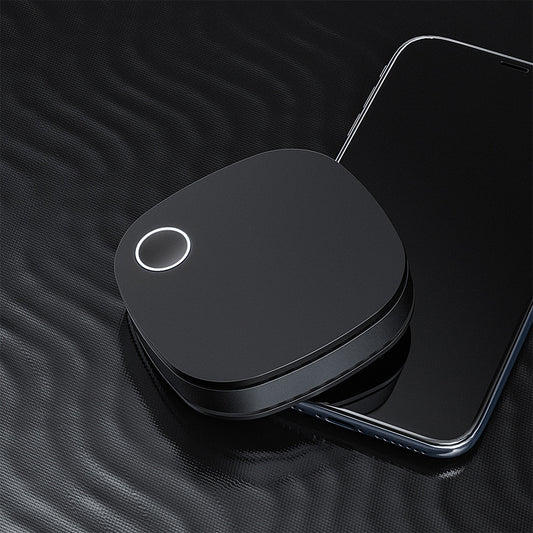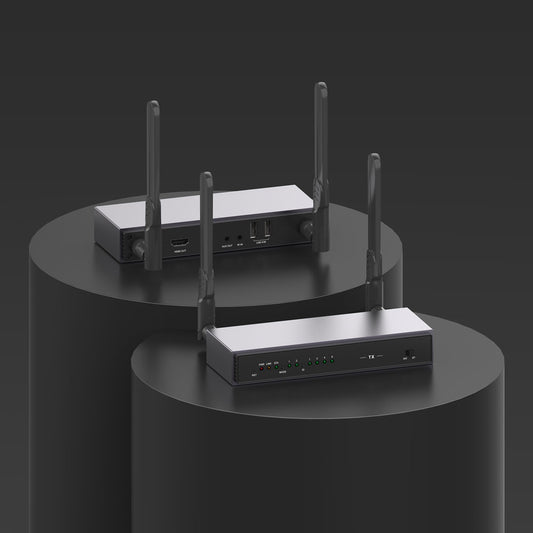
AV over IP:What You Should Know?
Pro AV is undergoing its biggest upheaval since the switch from analog to digital, and unless you're completely unfamiliar with the business, you've probably heard about AV over IP, or the fusion of audiovisual systems and internet protocols.
Additionally, AV over IP solutions are being used by more and more businesses throughout the world to complete activities like presentations, marketing, information sharing, etc.
What Is AV over IP?
"Audio-Visual over Internet Protocol" is the abbreviation for this phrase. Basically, it entails transmitting audio-visual data through a network, such as the internet, LAN, or WAN. AV over IP, commonly referred to as AV/IP or AVoIP, uses common network hardware to deliver and switch video and audio in contrast to conventional AV systems.
Enterprise businesses want to increase productivity and lower operational costs as they grow. Offering a safe foundation to build a scalable AV environment is one of the tactics used. Conference rooms, board rooms, huddle spaces, etc. may be future-proofed while saving a lot of money with a scalable AV infrastructure.
The term "AV over IP" refers to the transfer of audio and video data across a network, either a LAN, WAN, or the internet. In contrast to traditional AV setups, AV over IP refers to the switching, controlling, and transmission of video and audio using common network gear. As a result, AV projects can utilize significantly less wiring and be much more versatile.
How AV Over IP Operates
In contrast to conventional AV architectures, the AV over IP approach is primarily a streaming infrastructure. In general, streaming of video and audio over a network is nothing new, but AV over IP technology raises the bar for streaming.
Instead of deploying HDBaseT transmitters and receivers at each device in the room, the AV over IP approach suggests placing encoders at each source device and decoders at each destination device. Additionally, all of the encoders and decoders are linked to common Ethernet switches.
Since you can scale up at cheaper prices, you can link as many encoders and decoders as your network design permits. You are also no longer restricted to AV signals being contained within the room, depending on the network arrangement.
Where Can IP-AV Be Used?
AV over IP solutions are perfect for larger projects with a high number of endpoints, such as stadiums, sports bars, universities, and airports, due to their huge scalability, reduced cabling requirements, and significant potential cost savings.
Digital Signage & HDMI Distribution
Multicasting HDMI allows you to send video and audio to any display plugged into a signage network. Numerous screens can receive multimedia from a single transmitter without the need for specific video lines to be carried from a back room to displays in lobbies.
By combining matrix and video extension solutions, USB extenders, and video and peripheral extension and switching, you can create virtually infinite configurations for your applications, such as touch-interactive signage displays and information and wayfinding displays in retail, healthcare, education, public offices, and other settings (such as in KVM setups).
Configuration of a video wall
Any video distribution setup may be converted into an AV matrix switching or even a video wall control setup by using an IP-based controller program, allowing users to place any content from any source to any display.
When many AV receivers are linked together to create a video wall, you may set up presets, designate certain content zones, and remotely control content. The system is mobile-compatible, so you can easily access and activate settings from a smartphone or tablet.
Matrix switching for video
A type of switch that connects many inputs to many outputs is a video matrix switch, sometimes referred to as a crosspoint switch. It can be configured to combine supported input and output kinds and numbers. All outputs may be routed to a single input, any input may be routed to any output source or receiver, or any combination of the two may be employed.
An 88 matrix switch, for instance, has the ability to send 1 input to 8 outputs, 8 inputs to 8 outputs, or any other configuration of up to 8 outputs. This allows for the display of video from various sources without the need to physically move wires between screens. Today, it is most typically utilized with HDMI video.
You can switch any number of digital or analog sources to any number of digital displays using video matrix switching. In this manner, HDMI signals from a range of visual sources (including PCs, DVD players, and tablets) can be amplified and readily routed to a variety of screens and speakers.
Conclusion
Sports clubs and universities, for example, can make extensive use of AV over IP solutions for digital signage, video matrix switching, and video wall processing. ProScreenCast SC03 is essential if you're looking for a high-quality, plug-and-play AV over IP solution.
Did you know that our SC01 Miracast Dongle is the perfect solution to project on bigger screens, according to consumer platform Top-X ?








